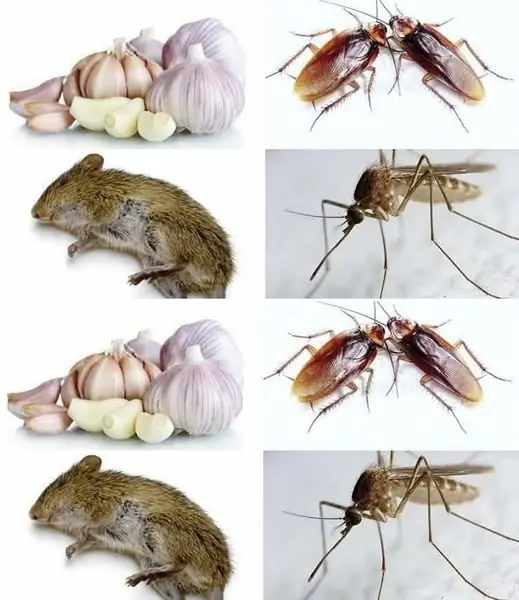
12 Warning Signs of Narcissistic Victim Syndrome
Narcissistic abuse syndrome is a term used to describe the psychological and emotional damage experienced by individuals subjected to manipulation or abuse by someone with narcissistic tendencies or narcissistic personality disorder (NPD). While an unofficial diagnosis, this term explains the long-lasting and seriously damaging impact this abuse can have on the victims mental health. Narcissistic abuse syndrome is also referred to as narcissistic victim syndrome. It’s important to note that while there is a strong correlation between narcissism and abuse, they are not always related. Individuals who are diagnosed as narcissistic are not always abusive.

What Is Narcissistic Abuse Syndrome?
Narcissistic victim syndrome refers to the emotional and psychological strain that develops from being in a relationship with someone who shows narcissistic traits or behaviors. Common symptoms of narcissistic victim syndrome include feelings of anxiety, self-doubt, confusion, fear and avoidance behavior. Victims often struggle to trust their perceptions of reality due to tactics like gaslighting or constant criticism. Enduring such psychological manipulation can lead victims to long-term psychological distress such as isolation or loss-of-identity.
Identifying narcissistic abuse can be difficult as these behaviors develop subtly and gradually. However, there are behavioral patterns that narcissists and those with NPD often engage in. These behaviors often involve manipulation, control, and emotional harm. Below are 12 common narcissistic abuse tactics that may indicate someone has experienced this form of abuse:
1. Idealization Followed by Devaluation
In romantic relationships, narcissistic abuse begins with a “love bombing” phase where the abuser smothers their partner with affection, compliments, and gifts. Abusers act loving, generous, and kind. They display overwhelming amounts of affection to draw victims into relationships, where the goal is to have the victim fall “head over heels”. Once they have convinced their victims, they begin to replace affection with devaluation through criticism, backhanded compliments, or neglect. In familial relationships, narcissistic parents may use love and support conditionally, withdrawing it when their child disappoints or angers them.
2. Gaslighting
Narcissistic gaslighting is where the abuser will intentionally deny a sequence of events or distort facts, regardless of validity, to confuse the victim. Abusers will manipulate their victims to believe their recollection of events or fabrications, leading victims to question their sanity and perception of reality. Long lasting psychological effects of gaslighting can lead victims to terminally suffer from self-doubt and confusion.
3. Isolation
Victims of narcissistic abuse often find themselves isolated from friends and family. The abuser may distance their victims from their support network, making their victims vulnerable to further psychological manipulation. Without a network, victims become silent and unable to speak to anyone to help dealing with the feelings of neglect and psychological abuse.
In this state, victims are susceptible to abusers’ “hoovering” tactic, where abusers take advantage of their lack of emotional support to reel them back into the cycle of abuse. “Hoovering” is also used when victims decide to get out of the relationship. Narcissists will attempt to draw the victims back by any means necessary. They will often throw a tantrum if they fail to convince their victims, cutting off contact or discarding their contact.
4. Smear Campaigns
Narcissistic abusers have to maintain their image and façade to earn the perceived adoration from others. When victims begin to identify their abuser’s narcissistic tendencies or question the abuser’s behavior, they may face smear campaigns designed to discredit them. The abuser might spread false narratives about the victim’s character or behavior to mutual acquaintances to further isolate them all, whilst trying to maintain a perfect image in the eyes of others.
9. Difficulty Setting Boundaries
Individuals experiencing narcissistic victim syndrome often struggle with maintaining healthy boundaries. Abusers often disregard boundaries entirely or punish victims for attempting to enforce them. Narcissistic abuse and manipulation diminish a victim’s ability to push back against their aggressors, making them more likely to succumb to pressure and prioritize others’ needs over their own. This dynamic can leave victims feeling powerless and unable to assert themselves in future relationships.
11. Anxiety and Depression
Narcissistic victim syndrome often manifests symptoms of anxiety and depression. Victims often develop feelings of hypervigilance, obsessing over their abusers’ next transgression. Facing constant abuse and criticism leads victims into feelings of hopelessness and distress. Victims who have endured this behavior begin to struggle to find joy in activities they once enjoyed, their symptoms can also worsen.
12. Freezing Response
When faced with continuous trauma, some victims enter a “freeze” state where they feel unable to take action or leave the abusive relationship. This response stems from feelings of helplessness and fear, with the brain activating this freeze response, waiting for a safer opportunity to act. Fears of abandonment and loneliness may exacerbate these feelings. These trauma responses can become deeply ingrained in victims, shaping how these victims navigate their future relationships throughout their lives.
Understanding Narcissistic Manipulation Tactics
Narcissists also engage in passive-aggressive behaviors, indirectly shifting blame or sabotaging others. They also use the silent treatment as a form of punishment to control victims and scapegoat individuals by pushing the blame onto them for any problems within the relationship. These behaviors systematically create confusion, deteriorate confidence, and diminish self-esteem over time, leaving victims increasingly dependent on the narcissist’s approval and validation.
News in the same category


The Natural Cure for Cancer, Diabetes, High Blood Pressure, and Poor Circulation: Drink This Powerful Remedy on an Empty Stomach for 7 Days

The Drink That Could Empty Hospitals in 2025: A Natural Remedy for Diabetes, High Blood Pressure, and Even Cancer – Without Medication

Discover: A Glass of Water, Vinegar, and Salt Can Cleanse Your Home

Kyllinga Brevifolia: Unlocking the Healing Potential of the “Green Kyllinga”

Garlic, Lemon, and Honey: Boost Your Immunity and Improve Circulation Naturally

Coconut Oil: The Superfood You Didn't Know Could Do All This!

🌿 Cabbage on the Legs and Chest Before Bed: The Natural Remedy That Still Amazes

Discover the Health Benefits of Garlic, Cloves, and Honey Blend

Uses and Benefits of Oregano Orejón – Try This Infusion!

Cleavers (Galium aparine): The Overlooked Herb That Can Transform Your Detox and Lymphatic Health

The Power of Clove: Nature’s Tiny Spice with Mighty Healing Benefits

🌿 What Is Purslane? How to Eat It and Its Incredible Health Benefits

🌺 Detox Tea with Hibiscus, Bay Leaves & Cinnamon: An Ancient Remedy for Better Sleep & Whole-Body Wellness

Say Goodbye to Diabetes, Fatty Liver, and Joint Pain with This Powerful Natural Infusion

What’s the Secret Behind Garlic and Onion? 😱 Here’s What You Need to Know

Discover the Power of Mango Leaf Tea for Your Health

The Leaves That Unclog Your Veins and Eliminate Poor Circulation and High Blood Pressure
News Post

Collagen Drink For Youthful Skin

DIY Eyebrow Growth Serum for Beautiful Eyebrows in Just 2 Weeks

Guava Leaves: 12 Powerful Benefits You Shouldn’t Miss

DIY Brow Boosting Serum

30 Minutes Treatment For Dark Lips

Why You Should Never Boil Eggs Directly in Water – Chef’s Secret Revealed! | Barbara O’Neill Inspired

What my wife’s rejection taught me about self-worth

CLEVER CAMPING HACK: HOW TO STOP THIEVES FROM STEALING YOUR EXTENSION CORDS

During the funeral, a crow lands on the little girl’s coffin

What are the origins of knife and fork language etiquette?

FACE & FULL BODY GLOW USING DIRT CLEANING HOMEMADE SCRUBS

The Natural Cure for Cancer, Diabetes, High Blood Pressure, and Poor Circulation: Drink This Powerful Remedy on an Empty Stomach for 7 Days

The Drink That Could Empty Hospitals in 2025: A Natural Remedy for Diabetes, High Blood Pressure, and Even Cancer – Without Medication

Discover: A Glass of Water, Vinegar, and Salt Can Cleanse Your Home

10 Best Homemade Potato Face Packs for Different Skin Types

10 Amazing Water Remedies for Beautiful Skin

Caring for our newborn meant missing dinner—my husband didn’t save me a plate

I never thought I’d face eviction at 72 years old just for being an “intimidating old biker”
